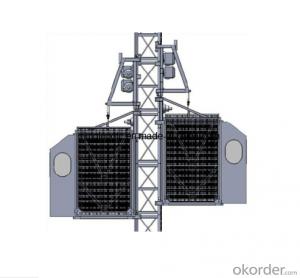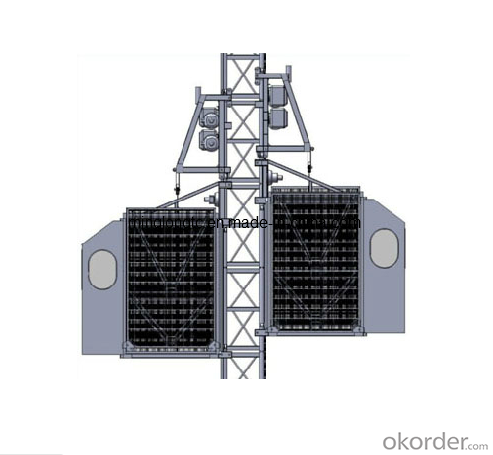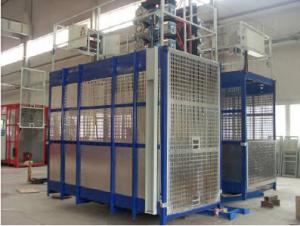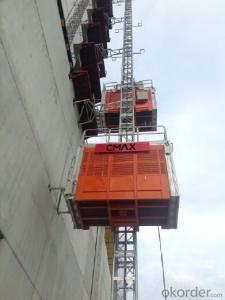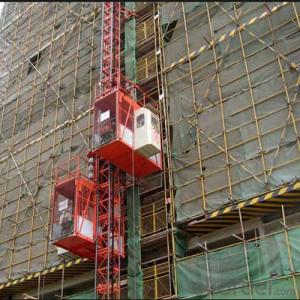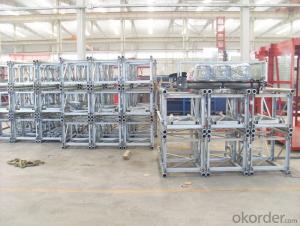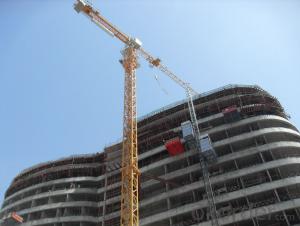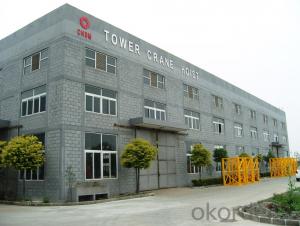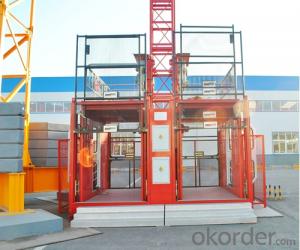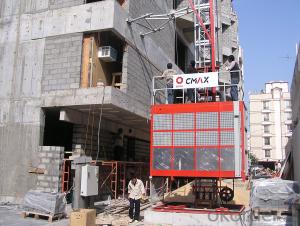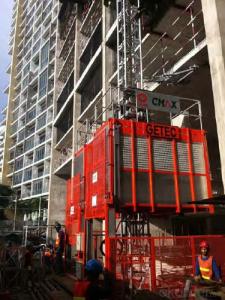Construction Hoist SC200/200 with CE ISO
- Loading Port:
- China main port
- Payment Terms:
- TT OR LC
- Min Order Qty:
- 1 set
- Supply Capability:
- 1000 set/month
OKorder Service Pledge
OKorder Financial Service
You Might Also Like
Structure of Building Hoist
BUILDING HOIST SC200/200
SC Hoist is a rack and pinion EL. Lift, used on construction site for transportation of personnel and materials. It is installed and dismounted conveniently and can grow as high as the building grow in height.
There're single cage and two cages hoists. A single cage can be quickly transformed into twin cages hoist by adding a cage and other parts. The hoist payload can be increased by adding counterweight equipment.
SC hoist has reliable electrical and mechanical safety device, it is efficient and safety vertical transporting equipment.
Steelwork of construction hoist is shaped through semiautomatic gas-protection welding with high-quality steel.
The steelwork surface is processed with phosphating and finish baking treatment or hot galvanizing treatment
According to customers' requirements.
The suspension cages can be decorated with steel wire mesh or perforated aluminum plate.
Building hoist Specifiction
| Parameters | Unit | Parameter | |
| Max. Load | kg | 2×2000 | |
| Max. Passengers | 2×25 | ||
| Rated Lifting Speed | m/min | 0-34.4 | |
| Free standing height | m | 50 | |
| Max. Lifting Height | m | 400 | |
| Max. Free End Height of Guides | m | 7.5 | |
| Modulus | 8 | ||
| Carriage Weight | kg | 1012×2 | |
| Size of Carriage | m | 3×1.3×2.3 | |
| Standard Knot Weight | kg | 146 | |
| Dimension of mast section | m | 0.65×0.65×1.508 | |
| Motor | |||
| Rated Power | Kw | 3×18.5 | |
| Rated Rotate Speed | r/min | 1460 | |
| Reducer | Center Distance | mm | 125 |
| Ratio | 1:16 | ||
| Over speed Governor | Type | progressive type | |
| Model | SAJ40-1.2A safety device | ||
| Operation Speed | m/min | 51.6 | |
| Brake Moment | N.m | ≥3000 | |
| Crane Weight | t | 22 | |
Building Hoist Images
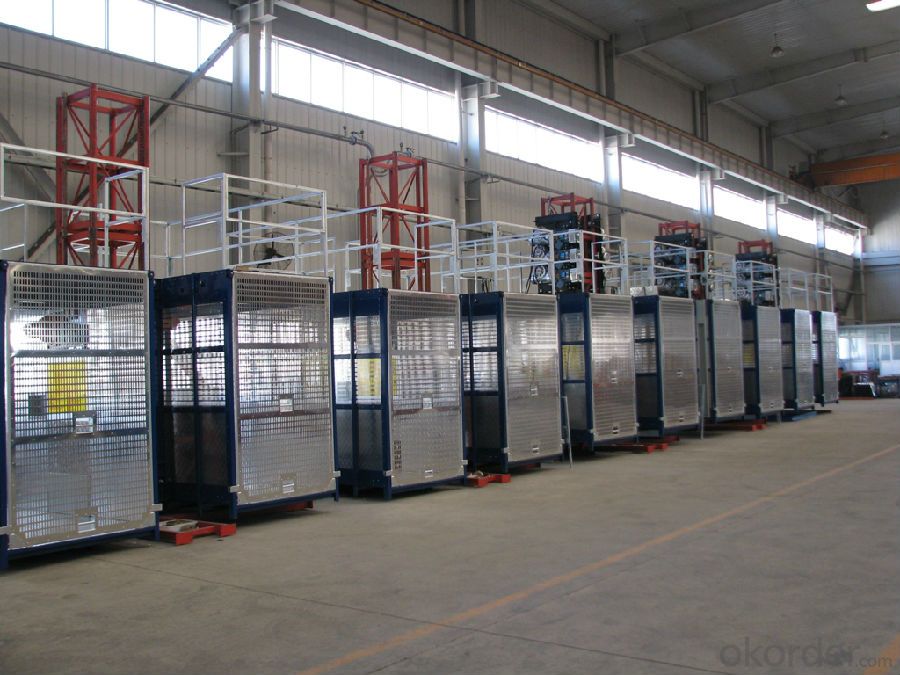
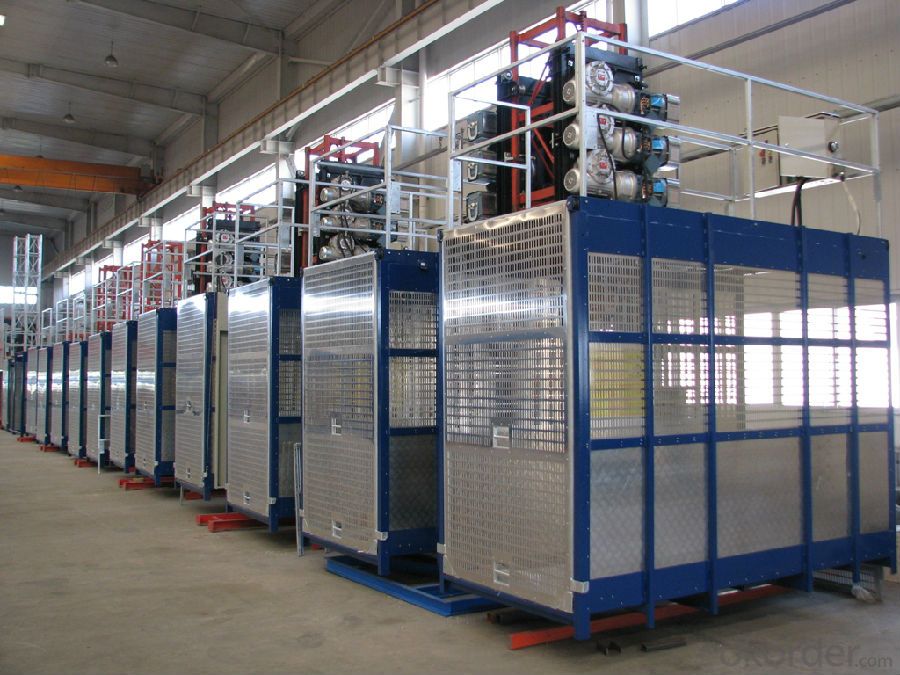
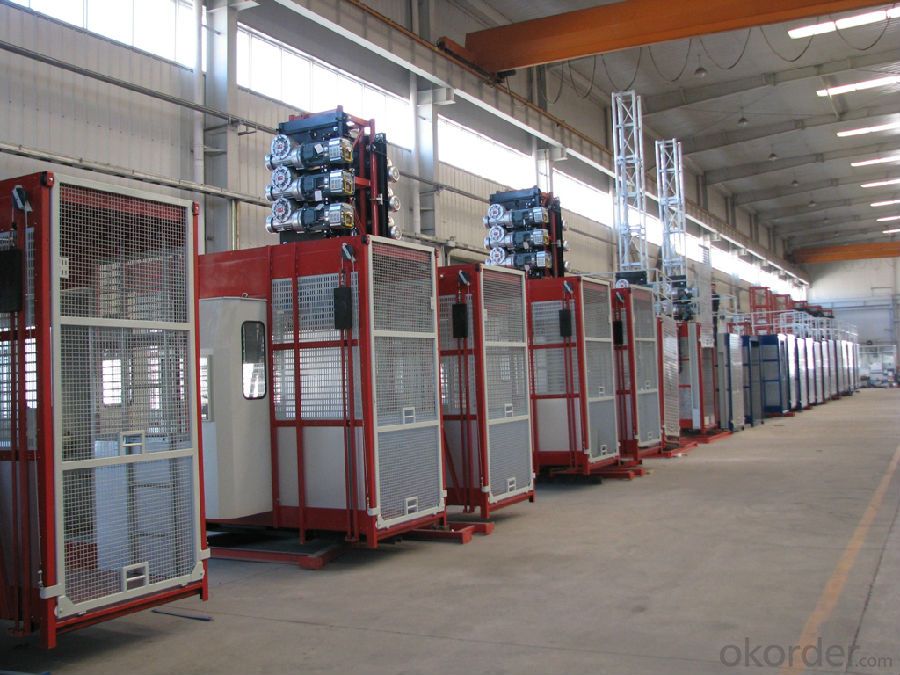
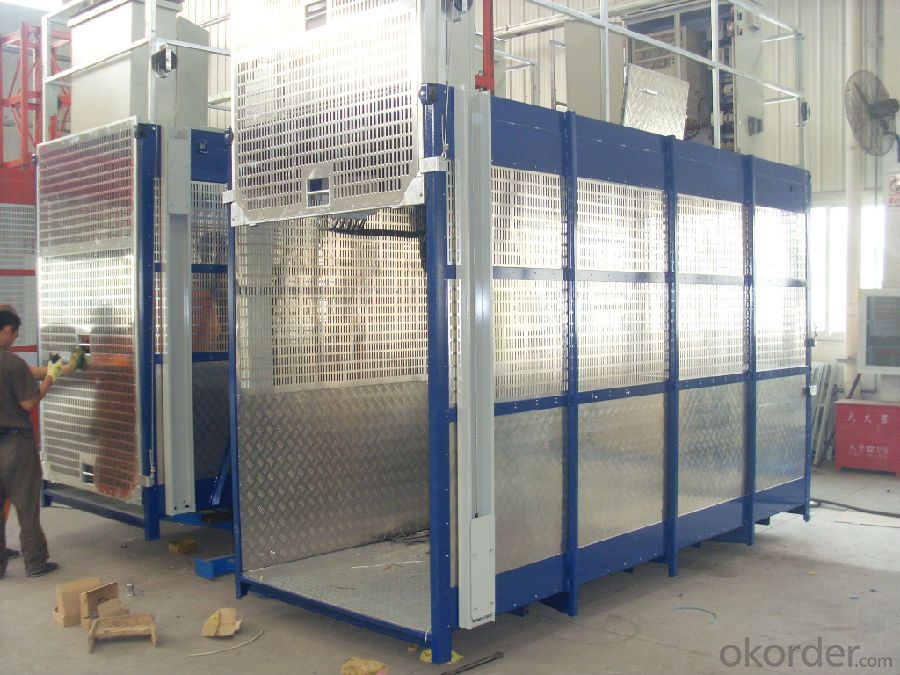
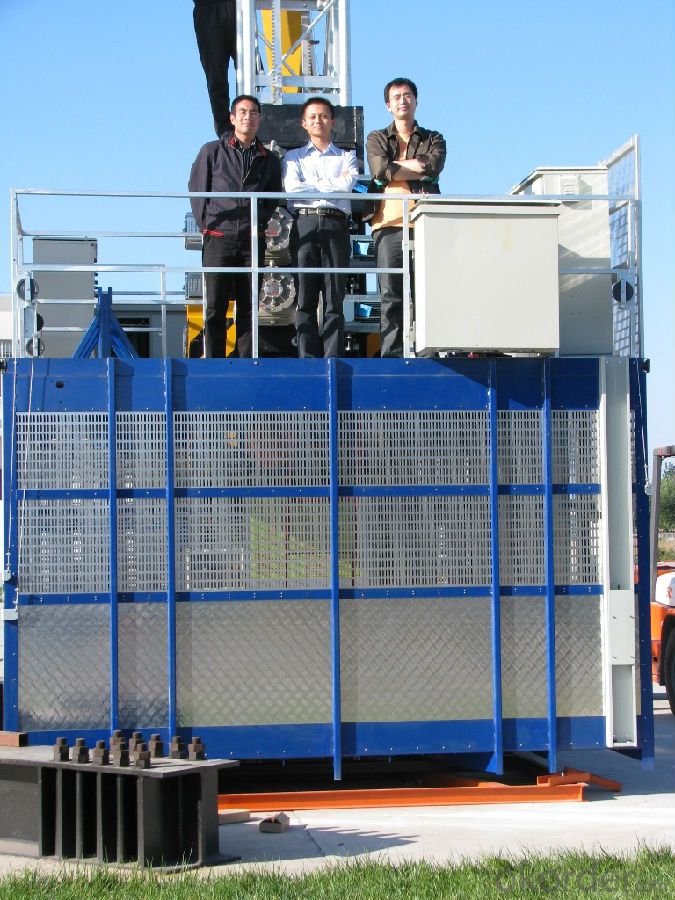
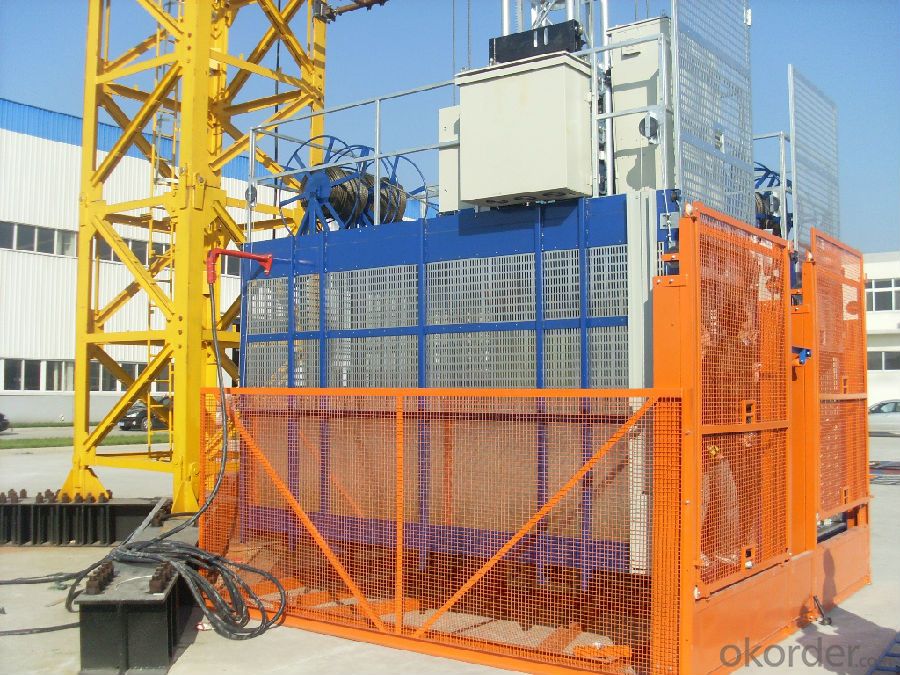
FAQ of Building Hoist
Q: What is the building hoist main purpose?
A: Building hoist equipped with double or single cabin to transport the materials and labors up and down. It's the ideal
construction equipment for vertical transportation in the field of construction.
Q: What is the main structure of building hoist?
A: The P/M construction hoist mainly contains metal structure, driving system, electrical control system, cable guide &
protection system, electrical top crane and safety device.
Q: What is the meaning of the building hoist’s code?
A: Take SC200/200 for example: “SC” stands for rack and pinion hoist, “200/200” stands for double cage and capacity
is 2 tons per cage. “SC200” stands for single cage and capacity is 2 tons.
Q: What is the dimension of the cage?
A: Normally the cage dimension is 3X1.5X2.5M (L/W/H) for 2t type hoist. Details should be checked according to our
quotation sheet. Also, the size can be customized according to the factual site condition. There are two doors (entrance
& exit doors) for each cage, It can be produced as up & down sliding or ramping model for safety and convenience
- Q: This question asks whether a building hoist can be utilized in both indoor and outdoor environments for lifting objects.
- <p>Yes, a building hoist can be used both indoors and outdoors for lifting objects. These hoists are designed to handle heavy materials and are often used in construction settings. However, their use is subject to specific conditions and safety requirements. Outdoor use may require additional considerations such as weatherproofing and stability in various weather conditions, while indoor use must adhere to space limitations and structural integrity of the building. Always ensure that the hoist is suitable for the environment and that all safety protocols are followed to prevent accidents.</p>
- Q: Is the elevator detail a construction plan? Do you have a detailed picture of the elevator?
- The construction diagram of the elevator appears to be a qualified elevator construction unit
- Q: This question asks for the process of changing the speed at which a building hoist cylinder operates.
- <p>Adjusting the speed of a building hoist cylinder involves several steps. First, ensure the hoist is turned off and disconnected from power. Check the manual for the specific model to understand the speed control mechanism, which could be a variable frequency drive (VFD), a governor, or a throttle control. If it's a VFD, adjust the frequency setting to increase or decrease speed. For a governor, you might need to change the spring tension or adjust the control valve. With a throttle control, simply turn the throttle to the desired speed setting. Always test the hoist at low loads first to ensure the adjustments are safe and effective before using it for heavy loads.</p>
- Q: Is it possible to operate building hoists in cold weather conditions?
- <p>Yes, building hoists can be used in cold climates, but they must be designed and maintained for such conditions. Cold weather can affect the performance of hoists, so it's crucial to use hoists specifically engineered for low-temperature operation. Regular maintenance and checks are necessary to ensure safety, as extreme cold can cause metal parts to contract and lubricants to thicken, affecting the hoist's functionality. Always follow the manufacturer's guidelines for operating hoists in cold climates.</p>
- Q: This question asks for examples of typical uses for building hoists, which are devices used to lift materials in construction settings.
- <p>Building hoists are commonly used in various construction applications. They are utilized for lifting and lowering materials and personnel in high-rise construction projects. Some examples include: 1) Lifting building materials such as bricks, cement, and steel beams to different floors of a building under construction. 2) Transporting workers to elevated work areas for tasks like scaffolding assembly or window installation. 3) Moving heavy equipment to upper levels of a structure. 4) Assisting in the installation of large fixtures like HVAC systems or electrical wiring systems. 5) Facilitating the removal of construction waste from upper floors. These applications highlight the versatility and efficiency of building hoists in construction projects.</p>
- Q: Is it permissible to use a building hoist for the purpose of lifting hazardous materials?
- <p>A building hoist is typically not designed for lifting dangerous materials. It is meant for the transportation of construction materials and personnel within a building. Lifting hazardous materials requires specialized equipment and procedures to ensure safety. Always refer to the manufacturer's guidelines and local regulations for the appropriate use of hoisting equipment and handling of dangerous materials.</p>
- Q: This question asks for the different categories of hoists used in construction.
- <p>Building hoists are essential for the construction industry and come in various types. The main types include: 1. Material Hoists, which are used for lifting building materials; 2. Personnel Hoists, designed for transporting workers; 3. Goods and Passenger Hoists, which can carry both materials and people; 4. Temporary Hoists, used during the construction phase; and 5. Permanent Hoists, installed in buildings for long-term use. Each type has specific features and safety considerations tailored to their intended use.</p>
- Q: What are the necessary maintenance and inspection procedures for hydraulic building hoists to ensure their safe and efficient operation?
- <p>Hydraulic building hoists require regular maintenance and inspection to ensure safety and efficiency. Daily checks should include visual inspections for leaks, proper functioning of controls, and safe operation of the hoist. Monthly inspections should cover the condition of hydraulic hoses, cylinders, and seals. Annual inspections should be conducted by a qualified professional to check the structural integrity, load-bearing components, and overall mechanical condition of the hoist. Regular lubrication of moving parts and replacement of worn components are also crucial. Always adhere to the manufacturer's guidelines and local regulations for maintenance and inspection intervals.</p>
- Q: For example, what records do you want to have a third party monitoring?
- After the construction elevator overhaul, the contents of the inspection and acceptance inspection shall be inspected; In the use of elevators, the contents of the regular inspection shall be conducted once a year in accordance with the provisions of the regulations.
- Q: This question asks for the procedure or steps to operate a building hoist, which is a machine used to lift materials in construction.
- <p>To use a building hoist, first ensure it's properly installed and inspected. Familiarize yourself with its controls and safety features. Load materials evenly onto the platform, ensuring not to exceed weight limits. Activate the hoist by pressing the 'up' button to lift the materials. Maintain a safe distance while the hoist is in motion. Once at the desired floor, press the 'stop' button, then unload the materials. Always follow the manufacturer's guidelines and safety protocols to prevent accidents.</p>
Send your message to us
Construction Hoist SC200/200 with CE ISO
- Loading Port:
- China main port
- Payment Terms:
- TT OR LC
- Min Order Qty:
- 1 set
- Supply Capability:
- 1000 set/month
OKorder Service Pledge
OKorder Financial Service
Similar products
Hot products
Hot Searches
Related keywords
